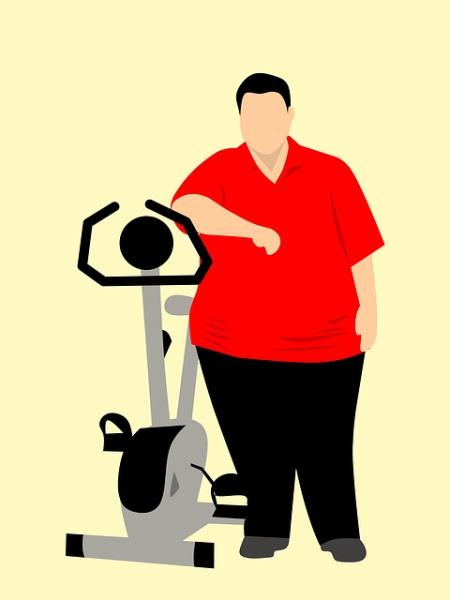Noting that about 30 percent of obese individuals are metabolically healthy (1), Dr. Ann-Sophie Wedell-Neergaard from the University of Copenhagen in Denmark and colleagues, asked whether physical fitness or lack thereof was significantly associated with those characteristics. In particular, they examined possible correlations between fitness and abdominal obesity, which is the type most closely associated with negative metabolic characteristics, as well as with the presence of low-grade inflammation. Their hypothesis was that there was such an association — independent of Body Mass Index (BMI), which is an indicator of the degree of overall adiposity. Their report was published in PLOS ONE.
In early studies of obesity, it was presumed that overall adiposity (fatness) was the main risk factor for the negative consequences of obesity, thus the use of BMI (Body Mass Index) alone to predict health problems. But subsequent studies have found that while BMI can be useful in indicating the presence of obesity in sedentary people, it's the degree of abdominal or visceral adiposity that is the stronger risk factor — that knowledge has led to the incorporation of waist circumference as an indirect indicator of abdominal adiposity into assessments of risk (2,3).
The investigators analyzed data on about 11,000 individuals from the Danish National Health Examination Survey from 2007-2008 (about 4700 men and 6300 women, on average in their late 40s). During that examination, body weight, height, and waist circumference were measured, and blood samples were taken. These participants also completed maximal cycle ergometer tests which allowed the assessment of maximal oxygen uptake (V02max) as fitness indices. Finally, C-reactive protein (CRP) was measured as a "nonspecific marker of low-grade inflammation".
About 44 percent of the men and 26 percent of the women were considered overweight according to their BMIs, while 9 and 7 percent, respectively were obese (BMI 30 or more). Their average waist circumferences were 94 and 83 cm for men and women. Daily smoking was reported by 13 percent of the men and 9 percent of the women.
No matter what the BMI, there was a significant inverse association between fitness and waist circumference — and that association remained significant when the data were also controlled for age, education, smoking and alcohol consumption — for both men and women. Further, levels of CRP increased significantly with increasing waist circumferences. As with the fitness data, the association remained significant when these same factors were controlled for. Again, the association was robust for both men and women.
The authors emphasized that these associations were significant independent of BMI — they applied to normal weight as well as overweight and obese individuals. For men, they pointed out, a low waist circumference was strongly associated with a lower level of low-grade inflammation, as indicated by low CRP. However, for women, inflammation was less ameliorated by low waist circumference, suggesting that perhaps other adipose tissue deposits could have more of an impact than they do in men. Since women are less likely to have visceral fat deposits than men, it might be the case that when they do develop those deposits they have more of an impact than in men.
One limitation to this study was that some individuals were excluded because of other health conditions that would preclude their participation in the ergometer testing, for example muscle or joint problems, so the data might have been biased towards more fit individuals. However the authors pointed out that their study supported other data in the literature.
While this study suggests that it is possible to be both 'fit and fat' we must note that these data relate to only metabolic characteristics. There are of course, other ailments that are more likely to occur with obesity, such as arthritis in the weight-bearing joints. So while this study strengthens the basis for advising people to strive towards an improved fitness level, whatever their current physique, it in no way suggests that for some being obese is healthy overall.
1) Metabolic health includes high sensitivity to the effects of insulin, low abdominal fat, and low level of general inflammation markers.
2) Wajchenberg BL. Subcutaneous and Visceral Adipose Tissue: their relation to the metabolic syndrome. Endocr Rev. 2000:21:597-738.
3) A waist circumference over 102 cm (40 inches) for men and over 88 cm (35 inches) for women indicates an increased health risk. Source: National Institutes of Health




